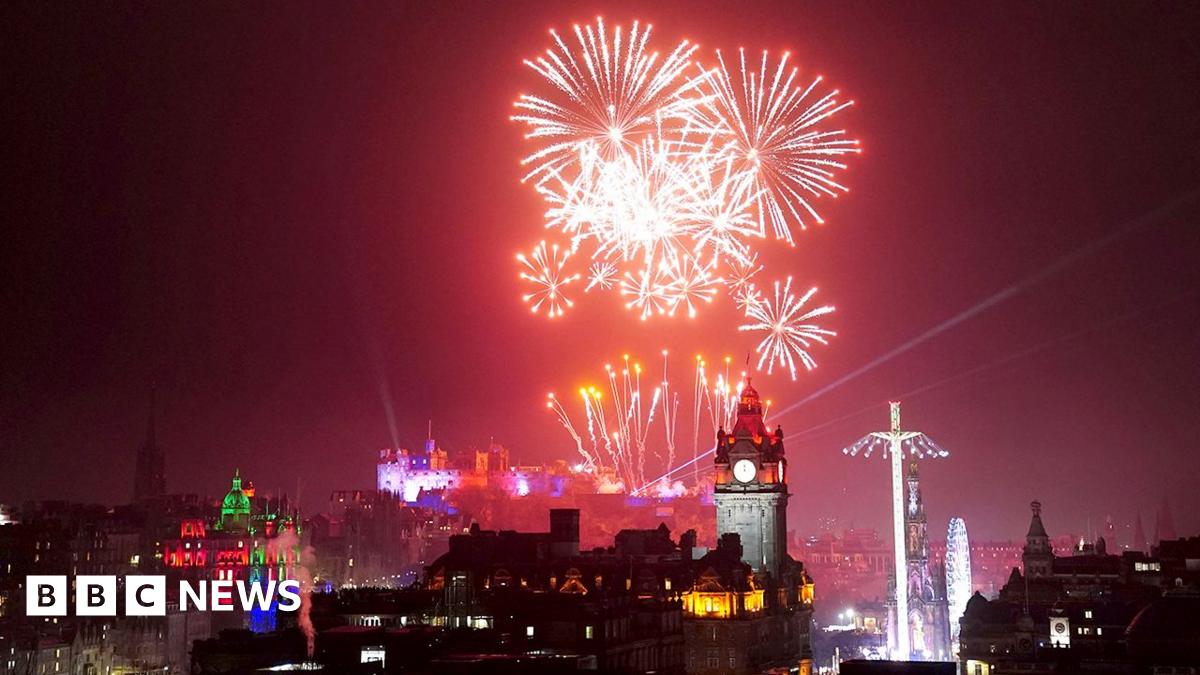Edinburgh’s street party and fireworks display were cancelled on public safety grounds after the Met Office issued yellow warnings for wind and rain. Indoor events, including a candlelit concert at St Giles’ Cathedral, are scheduled to go ahead as planned.
Unique Assembly, which runs the world-renowned Hogmanay festival on behalf of City of Edinburgh Council, said it had taken the decision in the interest of public safety.
It comes after wind gusts on Sunday led to the cancellation of the traditional Torchlight Procession, which usually kicks off the Hogmanay events.
Met Office spokesman Oli Claydon said there was already some travel disruption in Scotland, and “more broadly there could be disruption from strong wind and, in particular, where the wind and rain overlap”.
On Monday, the Met Office upgraded a rain weather warning for parts of northern Scotland on 31 December to amber, meaning flooding and disruption are likely until 17:00 GMT on Tuesday.
Forecasters expect areas of low pressure to bring unsettled conditions more widely across the UK on both New Year’s Eve and New Year’s Day.
That will eventually lead to a cold plunge of air from the north, with temperatures dipping below freezing for many.
Between Monday and New Year’s Eve there could be as much as 100-140mm (3.9-5.5 inches) of rainfall in some parts of western Scotland which could lead to localised flooding.
There could be some further snow in northern parts of the country too.
There will also be spells of rain across England, Northern Ireland and Wales. The rain looks set to be particularly heavy in Wales.
While it will be windy everywhere, it could be especially blustery in the south of England as the new year is welcomed in.
The Environment Agency’s flood duty manager, Stefan Laeger, said continuous rain meant river levels could be high across parts of the Midlands and the north of England between Tuesday and Thursday “when significant inland flooding is possible but not expected”.
In total, 27 flood warnings were in place across Scotland on Monday evening, with two in place in northern England.

